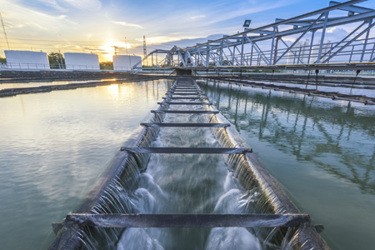Wastewater Treatment Plant Operations — 4 Key Operational Issues

GWT Treatment Solutions Can Assist A Wastewater Treatment Plant to Conquer 4 Critical Issues
Clean water is a necessary resource for life, business, and the environment in which we live throughout the world.
Companies and utilities that utilize sustainable, effective, and efficient solutions within their wastewater treatment plant operations play a primary role in ensuring safe, and clean water that is either reused or discharged without harm back to the environment.
Operational expertise and adaptability has been of one of the primary values in treatment facilities and this has fostered innovation in both the industrial and water utility sectors. Over the past few years, advances have been accomplished in the process of integrating and optimizing wastewater treatment plant operations but problems still remain.
1. Personnel
What is the issue?
Treatment operators in wastewater treatment facilities must be adequately trained and certified for these positions. These individuals are kept on alert throughout the day and night. They are responsible for coordinating and managing everything from valves to pipe leaks as well as instrumentation and electrical systems. This job is especially challenging during changes in source water quality and seasonal water flow rate variations.
What is the solution to this issue?
There will always be a need for the physical presence of staff to be responsible for the oversight of activities accomplished at water and wastewater treatment facilities. In fact, plant operations management can account for up to 30% or higher of the operational costs of a facilities wastewater treatment plant. Emerging technologies such as bio-organic flocculants and specialized electrochemical treatment technologies can be sustainably used and driven to optimize integration of automation and labor. This assists in the reduction of the plant labor requirements required while optimizing plant efficiencies.
2. Energy Consumption
What is the issue?
Energy consumption is one of the biggest expenses in operating a wastewater treatment plant for an industrial or water utility client. The generation and subsequent treatment of wastewater is estimated to deplete around 3% of a modern nation’s electrical power supply, or on average an anticipated 61 tWh (terawatt hours) of power each year. In domestic wastewater treatment applications, the largest proportion of energy is utilized in the biological aeration process. This energy usage in the aeration process is typically in the range of about 50–60% of overall plant usage.
What is the solution?
Modifications in the biological treatment processes have the potential to dramatically reduce the energy demand at a treatment plant while enhancing treatment performance metrics. Some examples of solutions include: the use of integrated head works screens in primary treatment; sustainable bio-organic liquid flocculants for efficient suspended solids clarification, and jet aeration diffusion systems providing up to 40% reduction in energy consumption over coarse bubble and surface diffusion systems in aeration basins.
3. Sludge Generation
What is the issue?
Sludge is the residual solid particles generated during the phases of the wastewater treatment process. This process includes mechanical, biological and chemical treatment. A critical environmental cost consideration for wastewater treatment operators is the disposal of excess sludge produced during the wastewater treatment process with the limitations of pH adjustment and (HAZMAT) restrictions.
What is the solution?
Sustainable, safe, and long term solutions for the deposition of sludge solids produced by domestic and industrial wastewater treatment plants are an essential part of a sustainable treatment facility. The utilization of sludge solids containing useful non-toxic organic matter and nutrients in agriculture is known as the most beneficial. Modern treatment technologies such as specialized jet aeration diffusion technology are even able to reduce the burden of sludge by lowering its production by at least one half.
4. Footprint
What is the issue?
Conventional activated sludge treatment has many issues — one of the largest is its land footprint. Activated sludge wastewater treatment plants are more costly to construct due to the extensive civil works construction involved.
These systems also occupy significant land areas to accommodate the many large tanks and basins required for clarification, aeration, and post-treatment.
What is the solution?
Advanced technologies that use smaller aeration basins by increasing the amount of biomass via the addition of flexible media for biofilm attachment (such as IFAS or MBBR) can reduce the treatment plants footprint. Additional, electrochemical coagulation technologies are especially known as an integral part of a facilities decentralized treatment system serving both industrial and water utility clients especially in areas of high population density. This smaller treatment plant footprint translates into lower land cost savings, but it also means lower capital cost resulting in (less concrete, steel, and equipment).
While there are several more issues facing wastewater treatment plants including stricter regulatory requirements, the above points are the 4 important topics we find customers dealing with on a consistent basis.
GWT’s innovative solutions from its NSF certified Zeoturb liquid bio-organic flocculant to its jet air diffusion systems, NatZeo treatment media, specialized electrochemical technology, and Genclean AOP disinfection solutions. These solutions have served to answer all of the challenges discussed above in different facets of both the industrial and domestic wastewater treatment process.
